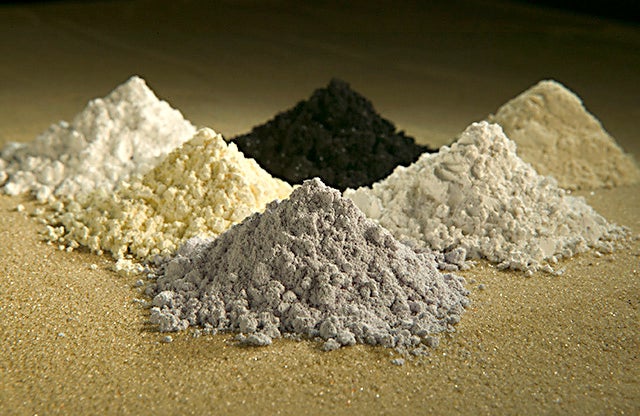New Nanocomposite Magnets Could Reduce the Demand for Rare Earth Elements
A little exchange coupling goes a long way.

Rare earth elements are getting a lot of ink these days, as questions about future supply have led to both political and economic tensions, and to a renewed search for rare earth deposits in North America, Australia, and parts of Southeast Asia. But some researchers think less rare earths, not more, are the key to sustaining industry’s need for the minerals going forward. GE scientists have devised a new breed of nanostructured magnets that require smaller amounts of rare earths to achieve the same high magnetism.
Rare earths like neodymium, dysprosium, and terbium are important ingredients in the strong magnets that are the key to everything from wind turbines to efficient automobile engines. But China currently produces more than 95 percent of the world’s refined rare earth elements, and global demand is quickly catching up to supply.
While other countries rush to bring more rare earth mines online—a process that can take years—GE researchers working with a Department of Energy Grant have devised a way to use nanocomposite magnet materials to boost magnetism in alloys, getting more magnetism per pound of rare earths. (Coincidentally, next week we’re visiting an abandoned iron mine some hope to convert for rare earth mining. Stay tuned for our report).
These new nanocomposite magnets work via exchange coupling, a complex physical property that can be harnessed in nanomaterials to increase magnetism. It’s all in the arrangement of the nanoparticles; exchange coupling doesn’t occur in pure magnetic alloys, but given the right mix and arrangement of nanoparticles of the same metals, researchers can get the same amount of magnetism out of less material—suddenly less is more.
That means not only do magnets require a smaller quantity of rare earths (not to mention iron, cobalt, and other metals), but those magnets are lighter and smaller as well. Ideally we’d innovate around our need for rare earths altogether. In the meantime finding a smart way to get the most out of the neodymium we’ve got ain’t bad.